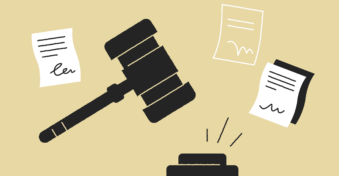Liability waivers are an essential tool for protecting businesses from potential liability. But have you ever wondered what makes it valid? We’re going to answer that question and more in this article.
What Is a Waiver of Liability?
This is a form signed by one party (the Releasor) to release another party (the Releasee) from potential culpability in the event of an injury, death and/or damages.
With 300,000 to 500,000 personal injury cases filed annually in the US alone, there’s a growing risk for business owners working with service providers and for businesses with inherently risky activities, such as a driving range, to be responsible should anyone get injured on their property.
Why Is a Waiver of Liability Important?
These legally binding documents are important as they protect businesses from being sued in the event that a customer is injured or killed during an activity. This is especially true for businesses offering inherently risky services like indoor rock climbing, driving ranges, hunting, bungee jumping, etc.
Is a Waiver of Liability Enforceable?
Generally, liability waivers that meet specific criteria are enforceable and likely to be upheld in court. However, certain states are more stringent when it comes to upholding them and the context of the injury may also impact its ultimate enforceability.

When Is a Liability Waiver Non-Enforceable?
Liability waivers will not be enough to protect a company from culpability in cases of gross negligence or instances where they had a legal obligation to make the activity safe. One example is the responsibility of construction companies to provide safety equipment and minimize risk in the work environment (an obligation that cannot be waived).
What Makes a Waiver of Liability Valid?
They are valid when they contain:
- The names of both parties
- Binding signatures
- The date it was signed
- An accurate description of the risks involved with the specific activity
How to Write a Waiver of Liability?
Follow these steps to create a valid document:
- Identify all risks associated with your product or service
- Include a list of all persons affected by these inherent risks (customers, contractors, etc.)
- Include any future risks that can arise
- List all relevant insurance policies in one place
- Include under what jurisdiction your waivers are enforceable and apply to
- Include a signature space for your customers and stakeholders
- Keep all signed documents and the corresponding necessary evidence for your records
It is recommended you consult with an attorney to ensure the document waiving injury responsibility meets all necessary requirements for the jurisdiction in which your business resides.
Final Thoughts
As you can see, liability waivers can be a great way to protect your company from culpability, but only when it’s used properly. If you need to create a legally binding waiver, you can click here for a dedicated digital solution with PandaDoc Waivers.
FAQs
-
You can write one on your own or use PandaDoc Waiver to do it for you. However, it’s advisable to speak with an attorney if you have any specific questions.
-
These documents hold up in court except in cases of negligence or ambiguous language in the signed form. Certain states are also more stringent, so it is important to refer to an attorney in your state or research the applicable law.


